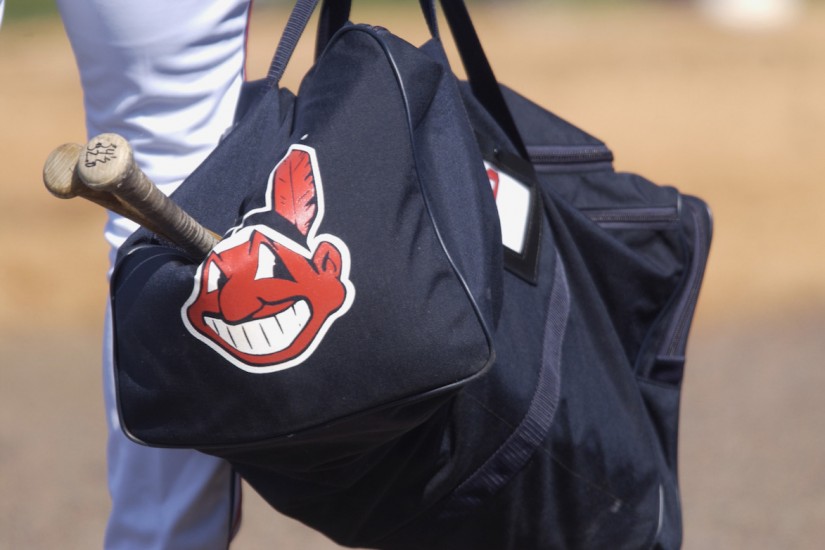In the early days there was little fanfare about the name. In the climate of that era, few of those attending games saw harm in using the name Indians, as minority groups were often the targets of both subtle and overt racism from the established classes. The persecution of Irish, German, and Jewish players was standard procedure in the major leagues, and black players had been banned since the 1880s. Choosing a name like Indians raised few eyebrows in the America of 1915.
Then the nickname got a picture. In the late 1920s, Cleveland ownership added an Indian caricature to the left sleeve of the team’s uniforms. The patch featured a brave or chief in a depiction that few among the team’s white fan base found offensive. Some fans even began to arrive at Cleveland’s League Park wearing Indian headdresses, a practice usually confined to Opening Day. For the remainder of the 1920s and 1930s, the nickname and sleeve patch drew scant criticism from the public.
At about the same time, the Cleveland Plain Dealer started to display an Indian caricature on the front page the day after a ball game. If the team was victorious, the Indian had a big smile; for a loss he wore a frown and his face was covered with various bumps, bruises, and bandages. This visual sports summary became a popular feature of the newspaper with fans buying the morning edition and looking for the Indian to see how the team fared the previous day. Slowly the caricature gained momentum, emerging as a popular image for the decades ahead.
In 1946, Bill Veeck, one of baseball’s greatest entrepreneurs, bought the Cleveland franchise and immediately sought to bring national attention to his latest venture. Veeck introduced brass bands and fireworks at the Indians’ Municipal Stadium, creating an entertaining atmosphere for families. In addition to the promotions, Veeck had the Indian sleeve patch re-designed to draw more attention and provide a mascot for Cleveland fans. The new Indian, designed by teenager Walter Goldbach, featured a yellow smiling face, prominent teeth, and a large, crooked nose. On April 16, 1947, opening day of a new season, the image appeared on the upper left side of the players’ warm-up jackets. The Cleveland Plain Dealer’s game day issue featured the paper’s own version of the logo with a large drawing of an Indian brave with the same features but holding a scalp in one hand and a war club in the other. Fans attending the games and reading the summaries could not help but notice the new sketch, and they began to identify it with the ball club.
Several years later the design changed slightly once again to feature a red face and smaller nose. The name “Chief Wahoo” soon became closely associated with the caricature. A number of sports writers used the name from time to time and it caught on with the public, giving an identity to the character seen on the uniforms and jackets.
